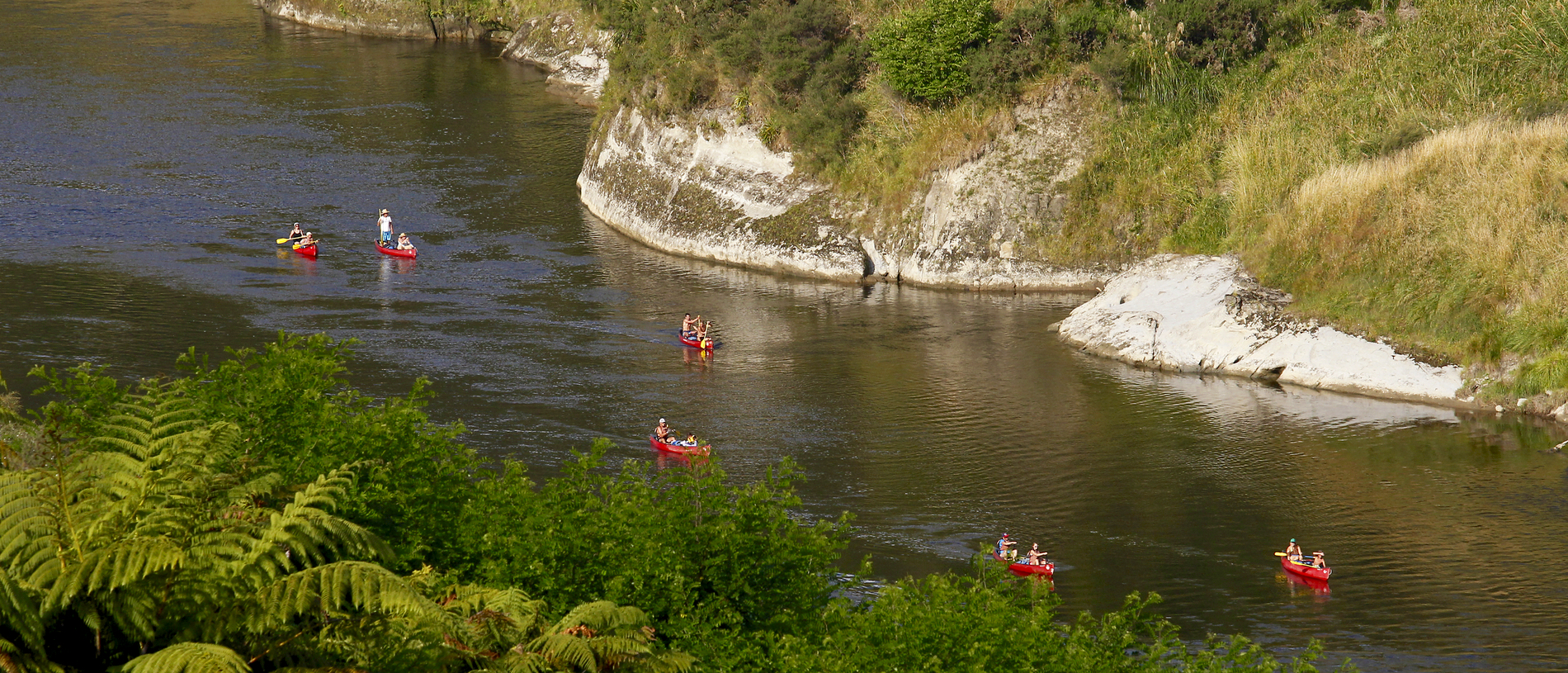
Whanganui Journey: paddle your own canoe
While considered one of New Zealand's Great Walks, the Whanganui Journey is less of a walk and more of a paddle.
Walk or bike the Kaiwhakauka Track or navigate the Whanganui River to the Mangapūrua Landing then take a gentle 40-minute walk through beautiful native bush and you’re there.
Where? Nowhere. Actually, the Bridge to Nowhere. Sounds very Zen, but it’s more intense than that. And history lends poignancy, too, to this remarkable piece of construction deep in the woods.
During the First World War, the government offered land in the Mangapūrua and Kaiwhakauka valleys to returned servicemen as part of a soldier settlement scheme, to try to give them a new start. The men cleared brutal scrub and bush, carved out roadways, tried to make a go of it in typical Kiwi fashion. A wooden swing bridge was constructed across the Mangapūrua Stream in 1919 to get the settlers connected, which was replaced by the current steel reinforced concrete version in 1936. Around 40m above the river within the sheer ravine walls, this is a serious piece of engineering; you can still see the remains of the old swing bridge down below, which cast the later version in an even greater light. It’s magnificent.
Sadly, the ‘Bridge to Nowhere’ linked to what quickly became ‘the land of abandoned dreams’ – it was too hard, too rugged, too isolated to make a living here.
But it makes for stunning walking in the amazing Whanganui National Park, of which the bridge is the flagship, while also being a symbol of those hard-working men and their families.
Unforgiving though it is, this area is a haven for the hardy modern explorer. You can canoe this mighty river or jet boat up, and there are places to stay nearby if you need a base for some intense bushwalking or mountain biking. A mysterious and magnificent part of the country. Explore.